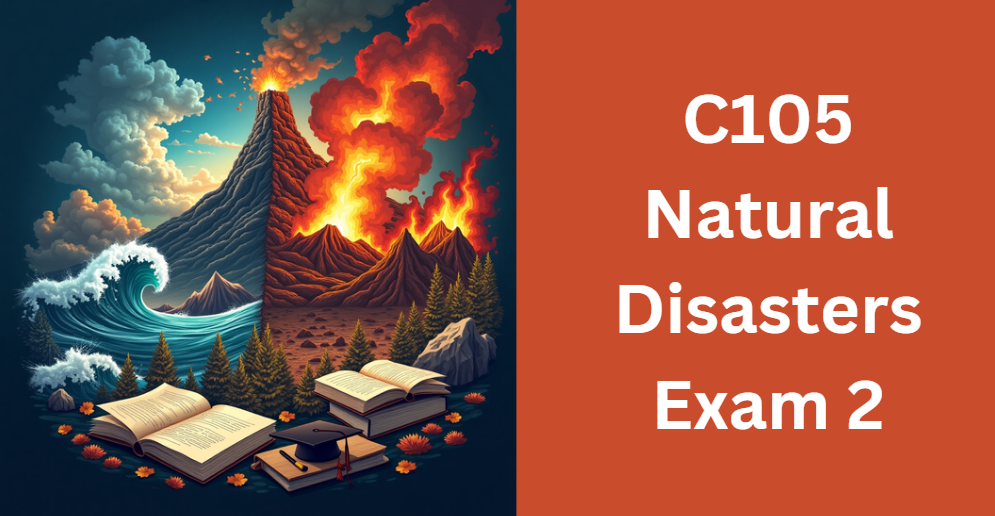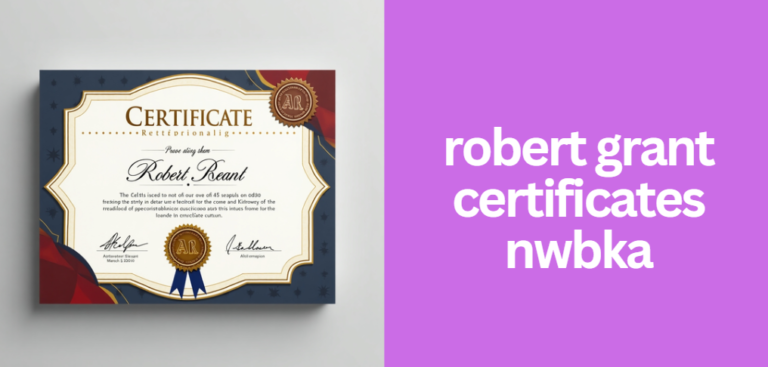Ultimate Guide to C105 Natural Disasters Exam 2
Welcome to the ultimate guide for C105 Natural Disasters Exam 2. This comprehensive resource is designed to help students master the course content, understand the intricate details of natural disasters, and apply effective study techniques to excel on the exam. Whether you are reviewing tectonic activities or preparing for storm surges, this guide provides a detailed roadmap to achieve success.
Exam Structure and Strategy
The C105 Natural Disasters Exam 2 is designed to test both your theoretical understanding and practical application of disaster management principles. The exam typically includes multiple-choice questions, short answers, and essay-based case analyses.
To help you navigate the exam effectively, consider these strategies:
- Know the Format: Familiarize yourself with the question types to manage your time better during the test.
- Practice Time Management: Allocate time to each section based on your strengths and weaknesses.
- Focus on Key Competencies: Understand what the examiners are looking for in terms of both content knowledge and critical thinking.
A table summarizing the exam structure might look like this:
| Question Type | Description | Tips for Success |
|---|---|---|
| Multiple Choice | Tests factual knowledge | Read each option carefully, eliminate wrong answers |
| Short Answer | Requires concise explanation of concepts | Focus on clarity and directness |
| Essay/Case Analysis | In-depth analysis of real-world scenarios | Plan your answer and support with examples |
By integrating these strategies, you can approach C105 Natural Disasters Exam 2 with a clear plan and improved confidence.
In-Depth Topic Reviews
This section provides a detailed review of each major topic covered in C105 Natural Disasters Exam 2. Understanding each natural disaster involves exploring its causes, effects, and management strategies.
Earthquakes
Earthquakes result from the movement of tectonic plates and are one of the most devastating natural disasters. In this section, we explore:
- Formation: How shifts in tectonic plates generate seismic waves.
- Impact: The effects on infrastructure, human lives, and the environment.
- Case Studies: Historical examples such as the 2010 Haiti earthquake, which offer insights into disaster preparedness and response.
Hurricanes and Tropical Storms
Hurricanes form over warm ocean waters and can lead to massive destruction when they make landfall. Topics include:
- Meteorological Formation: Understanding the conditions that lead to hurricane development.
- Safety Measures: Essential steps for emergency response and public safety.
- Historical Impact: Examining storms like Hurricane Katrina to understand their societal and economic consequences.
Volcanic Eruptions
Volcanic activity is complex and varies greatly in form and impact. In this review:
- Types of Volcanoes: Explore different volcano types and eruption styles.
- Warning Signs: Discuss modern monitoring techniques that help predict eruptions.
- Environmental Impact: Learn how volcanic ash and lava flows affect air quality and land use.
Tsunamis
Often triggered by underwater earthquakes or volcanic eruptions, tsunamis are waves of immense power.
- Causes and Mechanisms: Identify what triggers a tsunami and how it propagates.
- Warning Systems: Understand the technology behind early detection and evacuation procedures.
- Case Examples: Real-world instances, such as the 2004 Indian Ocean tsunami, illustrate the necessity of preparedness.
Floods and Flash Floods
Flooding can be both a natural event and a consequence of human actions. Key points include:
- Causes: From heavy rainfall to the failure of dams and levees.
- Mitigation Techniques: Strategies to predict, warn, and manage floods.
- Urban vs. Rural Impact: How different communities face unique challenges during floods.
Wildfires
Wildfires have become increasingly frequent and severe due to climate change.
- Dynamics of Spread: Factors such as wind, temperature, and vegetation that influence wildfire behavior.
- Prevention Measures: Techniques and strategies to prevent and control wildfires.
- Ecosystem Impact: The short- and long-term effects on wildlife and communities.
Additional Topics
In addition to the above, C105 Natural Disasters Exam 2 covers related phenomena such as landslides and droughts. Understanding these helps create a well-rounded view of natural hazards and disaster management.
Core Scientific Principles and Terminology
Grasping the scientific foundations is crucial for success in C105 Natural Disasters Exam 2. In this section, we break down essential concepts:
- Geology and Meteorology Basics: Understanding the earth’s structure and weather patterns is fundamental.
- Statistical Models and Risk Analysis: These tools help quantify the probability and potential impact of disasters.
- Glossary of Key Terms: A well-organized list of definitions aids in quick revision. For example:
| Term | Definition |
|---|---|
| Seismic Waves | Vibrations that travel through the earth following an earthquake. |
| Eruption Style | The manner in which a volcano releases magma and gases. |
| Storm Surge | A rising of seawater level caused by a storm, leading to flooding. |
This organized approach to scientific principles ensures you are well-prepared to tackle exam questions.
Effective Study Strategies
To maximize your learning, adopt a mix of traditional and modern study techniques. An effective study plan for C105 Natural Disasters Exam 2 might include:
- Personalized Study Plan: Tailor your study schedule to focus on weak areas.
- Use of Digital Tools: Platforms like Quizlet offer flashcards that reinforce key concepts.
- Collaborative Learning: Group discussions and online forums can provide different perspectives.
- Practice Exams: Regular self-assessment with practice questions boosts confidence.
Below is a sample study plan table:
| Study Activity | Frequency | Benefit |
|---|---|---|
| Flashcard Review | Daily | Reinforces memory through repetition |
| Group Study Session | Weekly | Offers diverse insights and discussion |
| Practice Exam | Bi-weekly | Identifies areas that need further review |
| Reading & Note-taking | Daily | Builds a strong foundational understanding |
This multi-faceted approach helps ensure comprehensive preparation for the exam.
Case Studies & Real-World Applications
Understanding theoretical concepts is enhanced by studying real-world applications. This section delves into historical natural disasters and their lessons:
- Analysis of Historical Events: Detailed examinations of events like the 1906 San Francisco earthquake illustrate key concepts.
- Lessons Learned: Each case study provides insights into disaster management and policy implications.
- Interactive Elements: Infographics and timelines help visualize how disasters unfold over time.
For instance, consider the following case study table:
| Disaster | Year | Key Lessons |
|---|---|---|
| San Francisco Earthquake | 1906 | Importance of building codes and urban planning |
| Hurricane Katrina | 2005 | Need for efficient emergency response and community planning |
| Indian Ocean Tsunami | 2004 | Critical role of early warning systems |
Real-world applications make the learning process engaging and applicable to exam scenarios.
Exam Day Preparation and Final Tips
As the exam day approaches, it is essential to adopt a calm and methodical approach:
- Last-Minute Revision: Focus on reviewing key terms and core concepts.
- Stress Management: Practice mindfulness and relaxation techniques to stay focused.
- Exam Strategy: Arrive early, read each question carefully, and allocate your time wisely.
- Post-Exam Review: Reflect on your performance and note areas for future improvement.
Adopting these final tips can help you enter the exam room with confidence and clarity.
Frequently Asked Questions
What career opportunities can I explore after completing C105 Natural Disasters Exam 2?
Completing this course can open many doors in fields related to emergency management, environmental policy, urban planning, and risk analysis. Graduates often find roles as disaster response coordinators, environmental consultants, or research analysts in both public and private sectors.
Additionally, opportunities exist in governmental agencies, non-profit organizations, and academic institutions that focus on natural hazards and sustainable development. This diverse career landscape allows you to apply your knowledge in ways that can make a tangible difference in community safety and resilience.
How can I gain practical field experience in natural disaster management beyond classroom learning?
While theoretical knowledge is essential, hands-on experience is invaluable. Consider seeking internships or volunteer opportunities with local emergency management teams, community organizations, or government agencies involved in disaster preparedness.
Field exercises, simulations, and participation in local disaster drills can provide real-world context and improve your problem-solving skills. These practical experiences not only enrich your learning but also build a professional network that can be beneficial for your future career.
Are there online communities or professional organizations that provide further support after finishing the course?
Yes, many online communities and professional networks focus on natural disaster studies and emergency management. Professional organizations, such as the International Association of Emergency Managers (IAEM) or local chapters of disaster response groups, offer forums, webinars, and conferences that can help you stay updated with the latest developments.
Social media platforms and dedicated LinkedIn groups also serve as excellent resources for networking, mentorship, and knowledge exchange among professionals in the field.
What advanced technological tools or software can enhance my understanding of natural disasters?
In addition to the foundational concepts covered in C105 Natural Disasters Exam 2, learning to use advanced software can greatly enhance your analytical skills. Tools like Geographic Information Systems (GIS) such as ArcGIS, remote sensing software, and simulation models are widely used in the field.
These technologies allow for detailed mapping of hazard zones, prediction of disaster impacts, and the visualization of real-time data. Familiarity with these tools not only deepens your technical expertise but also increases your attractiveness to potential employers in disaster management and research.
What additional certifications or further education options can complement the knowledge gained from C105 Natural Disasters Exam 2?
After mastering the course content, you might consider pursuing certifications in emergency management, such as those offered by the Federal Emergency Management Agency (FEMA) or specialized programs in climate resilience and environmental planning.
Many universities also offer advanced degrees in disaster management, urban planning, or environmental science. These additional qualifications can further enhance your expertise, broaden your career prospects, and position you as a leader in the field of natural disaster management.
Conclusion
In summary, this guide to C105 Natural Disasters Exam 2 provides an in-depth review of the exam structure, topic-specific details, study strategies, and practical examples. By using this resource, you will not only enhance your understanding of natural disasters but also gain the skills necessary to excel on your exam. Remember that effective preparation combines theoretical knowledge with practical application, ensuring that you are ready for any question that comes your way.
This comprehensive approach will help you navigate the complexities of natural disaster studies and secure your success on the C105 Natural Disasters Exam 2.
Happy studying and best of luck on your exam!
Other Posts Like C105 Natural Disasters Exam 2
planta de fluidos de perforación en punata camacho: Innovation and Technology in the Oil Industry






